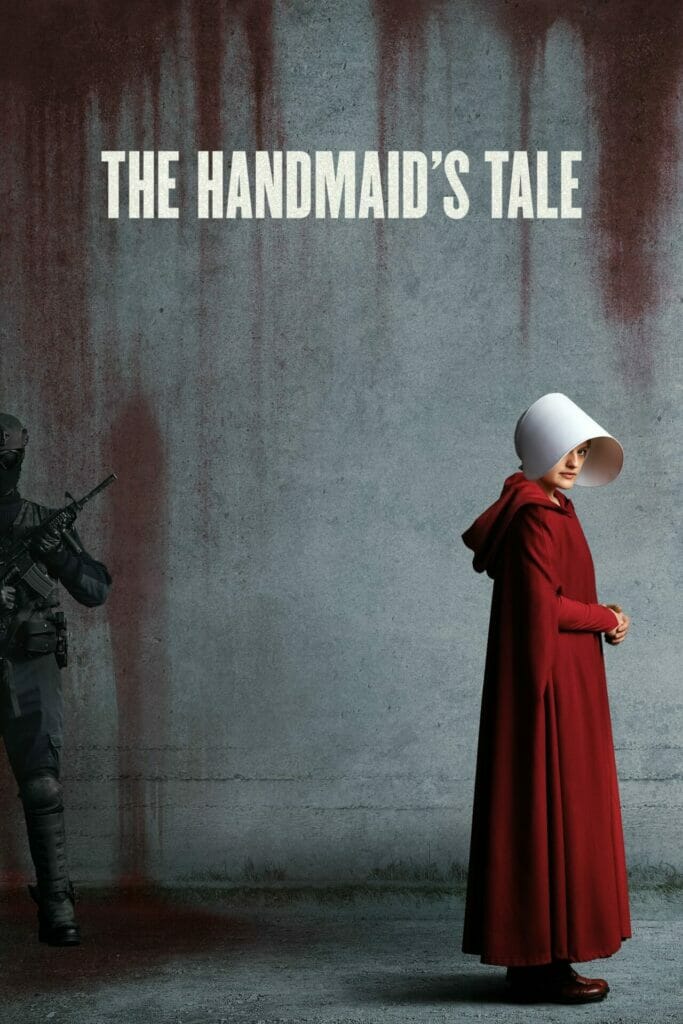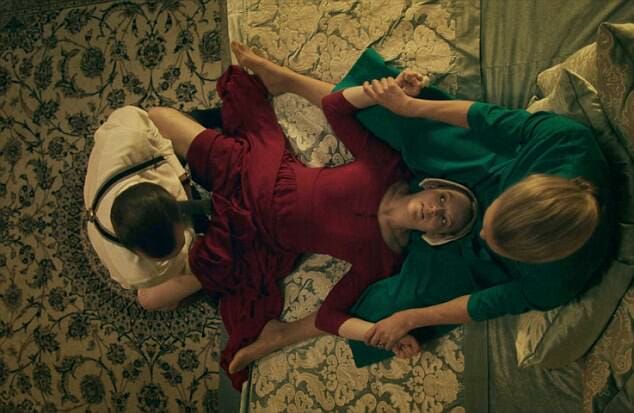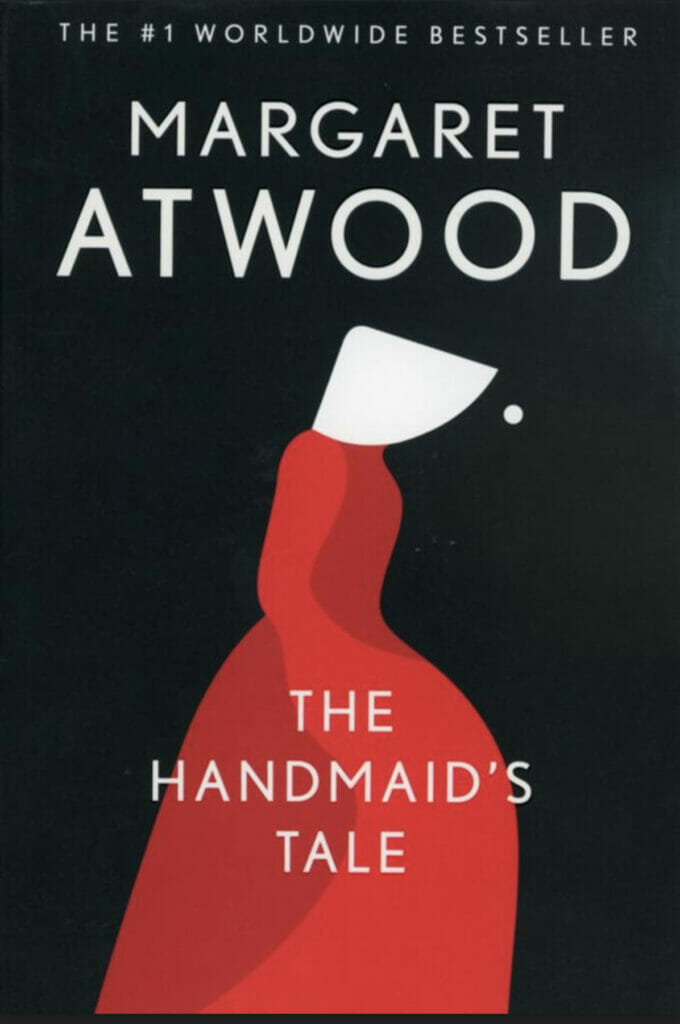An adaptation of Margaret Atwood’s novel of the same name, The Handmaid’s Tale is a cautionary tale of dystopian, strictly patriarchal totalitarianism. Premiered in 2017 and is still running in Season 6 as of January 2023, the series has never been an easy watch—not because of its distastefulness but mostly due to its unflinchingly scary premise. Events in the series are set in the near future in the Republic of Gilead, formerly part of the United States (roughly in and around the New England region) which has been taken over by unbound conservatism following a terrorist attack on Washington.
A Special Treat
The story unfolds mostly through the narration of a “handmaid” named Offred, portrayed by Elisabeth Moss. Before the fall of the old republic, Offred had another name and a family. Her husband was thought to be killed and her daughter was taken away by the state. The new society ironically returns to an obsolete belief in which men assume control of everything, whereas women are second-class citizens. Women’s roles are divided based on a strict caste system consisting of three groups: wives, servants, and handmaids.

Offred is among the first-generation handmaids, whose only life purpose is to breed. Her fertility is her curse; she has to bear children on behalf of her owners. She is now identified as the property of Fred Waterford (Joseph Fiennes) and his infertile wife Serena Joy Waterford (Yvonne Strahovski). Even her name is not her own; Offred refers to “of Fred” after the man who owns her. It is the society-approved handmaid naming method. Offred remembers her past as an independent woman. It is through her voice and thoughts that viewers are presented with the dark reality of her world.
Like all handmaids, she spends most of her days running errands and sometimes doing nothing inside a suicide-proof bedroom. Women are not supposed to read in Gilead; they recognize every object and its function from the images on the label. When not running errands and being imprisoned in the bedroom, Offred is required to perform a ceremony with her masters.

The ceremony is basically a state-sanctioned rape where a handmaid is forced to have sex with her male owner. During the ceremony, Offred is lying on her back and held down by Mrs Waterford while Mr Waterford does his deeds. Offred’s main function in the ritual is merely to provide her female reproductive organs for her master. If she is impregnated, the baby is neither hers nor Mrs Waterford’s; the baby belongs only to Mr Waterford. It is more than just an act of unwanted sex, but a blatant and near-total violation of a woman’s body and soul. The Handmaid’s Tale paints a picture of how a man can use an unfortunate woman in the most horrible way possible to his ends. Under the disguise of procreation, the ceremony is about the danger of giving men too much power, and how society allows them to exercise it without consequence.
According to Margaret Atwood herself, the details of the ritual are solely based on a passage in the Bible. More specifically, the author refers to Genesis 30:3—Then she said, “Here is Bilhah, my servant. Sleep with her so that she can bear children for me, and I too can build a family through her.” The male fundamentalists behind the founding of Gilead take the liberty the interpretation the verse and turn it into law. Offred’s entire existence rests upon the health of her womb. In the event she fails to bear any child, she will be relegated to the lowest social class known as “unwoman” and exiled into forced labor until she dies. Until that moment, she is still allowed to wear the handmaid uniform, consisting of a white bonnet and red dress to symbolize childbirth and menstrual blood.

The Handmaid’s Tale showrunner Bruce Miller remains truthful to the source material throughout the first season and sets the foundation for story expansion. Persistent adherence to the novel means the TV series gives clear depictions of Gilead’s cruelty. It is a place where physically and sexually abusive behaviours are weapons for men to maintain power. But most prominently, division and paranoia are effective tools to exert control. Reed Morano directed the series’ first three episodes, for which she received an Emmy Award. She also won a Directors Guild of America Award for directing the episode “Offred.” Morano is the first woman to have received both awards as a director of a dramatic series.
It is the whole premise of the series that expands into many twisting plots and a tendency to display physical violence. By the end of Season 1, the show has already adapted much of the novel. The good thing is that Margaret Atwood acts as a consulting producer for the series, so it is highly unlikely the expansion strays too far from the original idea.

A ruthless dictatorship and injustices toward women are terrifying, but the most horrible thing about The Handmaid’s Tale is the flashback. Since the “present” day in the story is set in the future, the flashback points to actual present-day America—a time when all the troubles started to take shape and snowballed into an inevitable ugly outcome.
Main Cast and Crew
| Main Cast | |
| Character | Portrayed by |
| June Osborne | Elisabeth Moss |
| Commander Fred Waterford | Joseph Fiennes |
| Serena Joy Waterford | Yvonne Strahovski |
| Dr Emily Malek | Alexis Bledel |
| Aunt Lydia Clements | Ann Dowd |
| Lucas “Luke” Bankole | O-T Fagbenle |
| Commander Nick Blaine | Max Minghella |
| Janine Lindo | Madeline Brewer |
| Moira Strand | Samira Wiley |
| Rita Blue | Amanda Brugel |
| Commander Joseph Lawrence | Bradley Whitford |
| Mark Tuello | Sam Jaeger |
- Executive Producer: Bruce Miller, Daniel Wilson, Warren Littlefield, Fran Sears, Ilene Chaiken, Elisabeth Moss
- Supervising Producer: Marissa Jo Cerar
- Associate Producer: Lisa Clapperton
- Consulting Producer: Margaret Atwood
- Director: Red Moreno, Mike Barker, Skogland Kari, Kari Skogland, Daina Reid
- Composer: Adam Taylor
- Costume: Ane Crabtree
- Writer: Bruce Miller, Lynn Maxcy
The Handmaid’s Tale is such a powerful story! Every time we watched an episode, we became angrier and angrier at the male-dominated system. Any programming that can induce strong emotions like that is what we call great!
What do you think about the show? Did it make you angry? Or did it make you glad to be a man? Let us know. We’d love to hear from you.
Other things you might want to know about.
What is Margaret Atwood best known for?
According to britannica.com, Margaret Atwood is best known for her prose fiction and her feminist perspective. She was born in 1939 in Canada. The Handmaid’s Tale is probably her most familiar novel. She began writing at age 5 and by the time she was 15, her efforts became more serious. She got her degree at Victoria College at the University of Toronto and earned a master’s degree in English Literature in 1962 from Radcliffe College in Massachusetts. Many of her poems made e one ponder human behavior, celebrate the natural world, and condemn materialism. Common themes in her novels are role reversals and women seeking out new beginnings. The Handmaid’s Tale was published in 1985 with the film following in 1990. It’s the saga of women living in sexual slavery after the world turned upside down.
Here is a list of Atwood’s books in order compiled by google.com
- Surfacing (1972)
- The Handmaid’s Tale (1985)
- Cat’s Eye (1988)
- Alias Grace (1996)
- The Blind Assassin (2000)
- Oryx and Crake (2003)
- The Testaments (2019)
Go to britannica.com to read more insightful information about Margaret Atwood.
Who is Elisabeth Moss?
According to thethings.com here are 15 interesting facts about Elisabeth Moss.
Moss has become a household name with three hit tv shows, The West Wing, Mad Men, and The Handmaid’s Tale.
- Artistry runs in the family. Her mother played blues harmonica and her dad was a jazz artist. Her younger brother works in the industry as a filmmaker.
- First on-screen appearance was in 1990 when she played Sandra Bullock’s six-year-old daughter in a miniseries called Lucky Chances.
- Dance Fever-she studied ballet at the School of American Ballet in New York City and in Washington D.C. with Suzanne Farrell at the Kennedy Center.
- Scientology-she’s been a member since she was a kid. She keeps quiet about her involvement but has defended her beliefs. She used to be friends with Leah Remini.
- Cubs Fan-Moss is a fourth-generation Cubs fan on her mom’s side.
- Break out role…or should we say roles-it’s hard to pick which one. Is it Zoey Bartlet from The West Wing, or Peggy Olson on Mad Men?
- A friendly voice-she’s done much voiceover work. Holly in Frosty Returns (1992) was the first of her voiceover gigs.
- Guest appearances galore-some of her more famous guest roles have been on Grey’s Anatomy, Ghost Whisperer, Law & Order: Criminal Intent, Invasion, and Picket Fences.
- TV Icon-Moss has earned this title from her roles on The West Wing, Mad Men, and The Handmaid’s Tale
- Broadway Star-Moss made her debut in 2008 as Karen in the revival of Speed-the-Plow. In March 2015 she play Heidi Holland in The Heidi Chronicles and earned a Tony nomination.
- Marriage-Moss met Fred Armisen from SNL and after dating for a year they married in 2009. This marriage only lasted 8 months. He has admitted that he was a terrible husband.
- Self-proclaimed cat lady and loner-Moss has 2 cats named Ethel and Lucy who keep her company at all times.
- From actor to producer-The Handmaid’s Tale is one of Moss’ first producer credits.
- Gold Statues are a Star’s Best Friend-Moss has won 2 Primetime Emmy Awards and 2 Golden Globe Awards.
- Net Worth-Moss reportedly earned between &75,000 to $175,000 an episode on Mad Men, and $200,000 an episode on The Handmaid’s Tale. Her net worth is an estimated $14 million.
What do we know about men’s cults?
According to nbcnews.com, there are many cults in America and beyond that control women and their reproductive choices. In 1969 there were cult killings in Los Angeles by Charles Manson and his followers. The goal of cult leaders is to focus all attention on belonging to the leader or group and nothing else. Former members from Scientology and the New York-based political group called the Newman Tendency reported that they were forced to terminate pregnancies so they could carry out their duties for the group. Cults like the Children of God would not allow women to have any type of birth control at all. David Koresh and his Branch of Davidians got women pregnant and would separate the mothers and the children for long periods. The children barely knew who their mothers were.
Scientology preys on young people to join their secret organization called the Sea Org. They are separated from their parents for years. There are other ways to separate parents and children. For example, Jehovah’s Witness mothers have to take their young children out for hours every week to “witness” to the community. When the moms are not canvassing they spend hours every evening studying either at home or at their meeting place called Kingdom Hall. Recently there have been thousands of cases of child abuse and sexual abuse of women.
The Fundamentalist Church of Latter Day Saints and Warren Jeffs married off young women to older men who already had 60-80 wives. Warren Jeffs is now serving time for aggravated sexual assault of underage girls. These girls were groomed to be wives for these men.
Go to nbcnews.com and read Alexandra Stein’s article called ‘Cults are terrifying. But they’re even worse for women.’
Click Here For Even More Epic Post Apocalyptic Sci-Fi TV Shows >>







